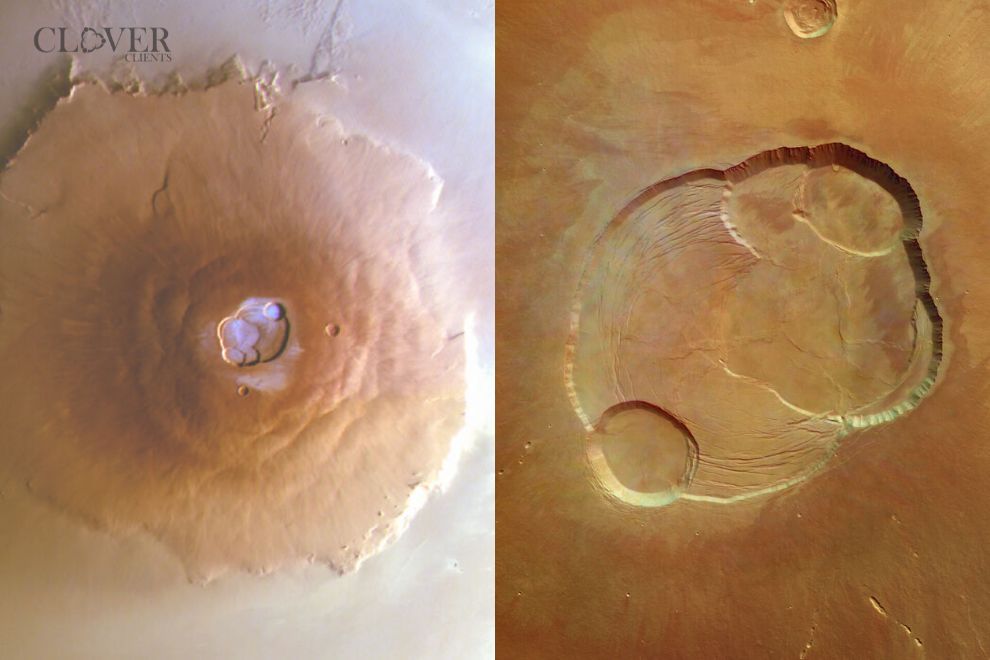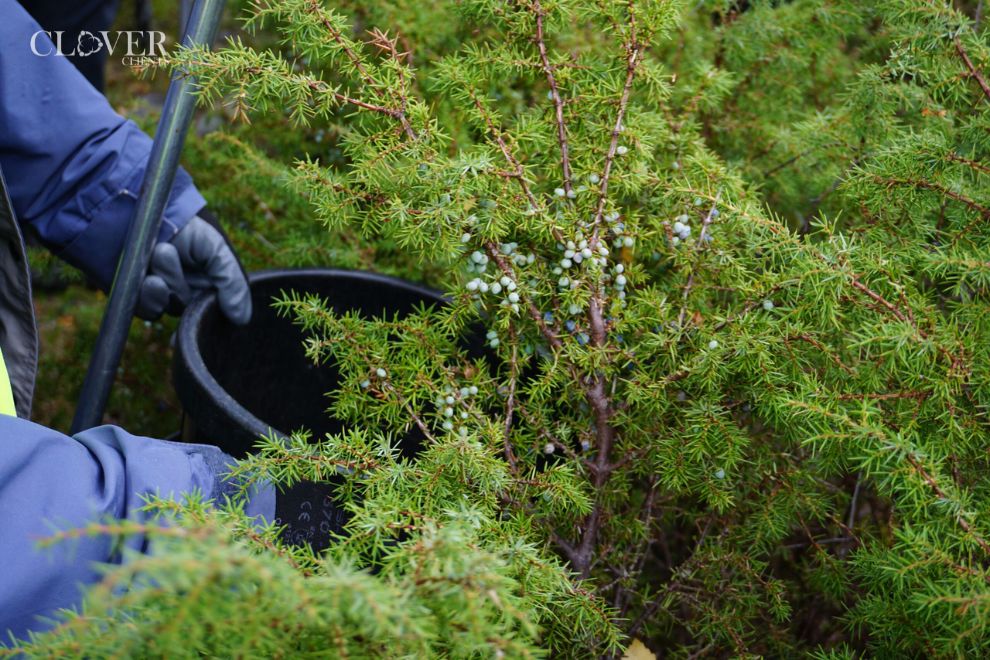A European space probe has uncovered yet more evidence of liquid water on Mars. It has been found that thousands of gallons of frost are within the calderas of Martian volcanoes. An international astronomy team described these patches of water frost as a “significant” first after identifying them on the volcanoes of the Tharsis region.
This discovery is detailed in the journal Nature Geoscience. Furthermore, it challenges previous assumptions about the Martian climate and is a breakthrough in the search for life on other planets.
Separate Discovery of Mysterious Holes on Mars
In a separate discovery by a different probe, another volcanic feature on Mars has been identified as a potential goldmine of knowledge about the planet. A series of mysterious holes, about 10 feet across were believed to be skylights. These were also where the regolith of Mars collapsed into a lava tube. These were also reexamined.
These images were taken by the University of Arizona’s High-Resolution Imaging Science Experiment (HiRISE) camera back in 2022. It also reignited speculation about the origin of the mysterious holes found on the Arsia Mons volcano, also in the Tharsis region.
Water Movement on Mars’ Largest Volcano
Each day during the cold seasons, 150,000 tons of water swaps between the surface of Olympus Mons and the atmosphere. It is assumed to be equivalent to around 60 Olympic-size swimming pools. Olympus Mons is the largest volcano in the solar system, standing three times the height of Mount Everest and spanning the width of France.
The frost, discovered by the Color and Stereo Surface Imaging System (CaSSIS) onboard the European Space Agency’s Trace Gas Orbiter, is present for only a few hours after sunrise before it evaporates in sunlight.
Implications for Martian Climate and Exploration
Study leader Dr. Adomas Valantinas of Brown University, Rhode Island, explains that the unique microclimate created by the way air circulates above these mountains allows thin patches of frost to form. This frost forms in very thin layers, about the width of a human hair.
Dr. Valantinas suggests that this phenomenon may be a remnant of an ancient climate cycle on modern Mars, where precipitation and possibly snowfall occurred on these volcanoes in the past.
The research team proposes that modeling how the frost forms could reveal more secrets about Mars, including where water exists, how it moves, and understanding the planet’s complex atmospheric dynamics, which is essential for future exploration and the search for possible signs of life.
Potential for Astronaut Shelter and Life Detection
The holes discovered by the HiRISE camera are believed to be a result of the ground caving into a lava tube below. On Earth, underground lava tubes are strange places, but on Mars, they could offer ready-made shelter from radiation. This also provides safety for astronauts during solar storms.
These lava tubes could also be promising places to search for signs of microbial life. Without a significant magnetosphere to protect against solar radiation, the interior of Mars might be the only natural protection available.
Proposals are forming to send specialist rovers to Mars to explore these skylights. Testing is ongoing for serpentine rovers that ‘spiral’ across the ground rather than roll. It allows them to traverse walls, uneven terrain, and even ice. Initially designed for expeditions to Saturn’s icy moon Enceladus, these snake probes could also be ideal for exploring lava tubes on Mars, offering a simpler starting point.













